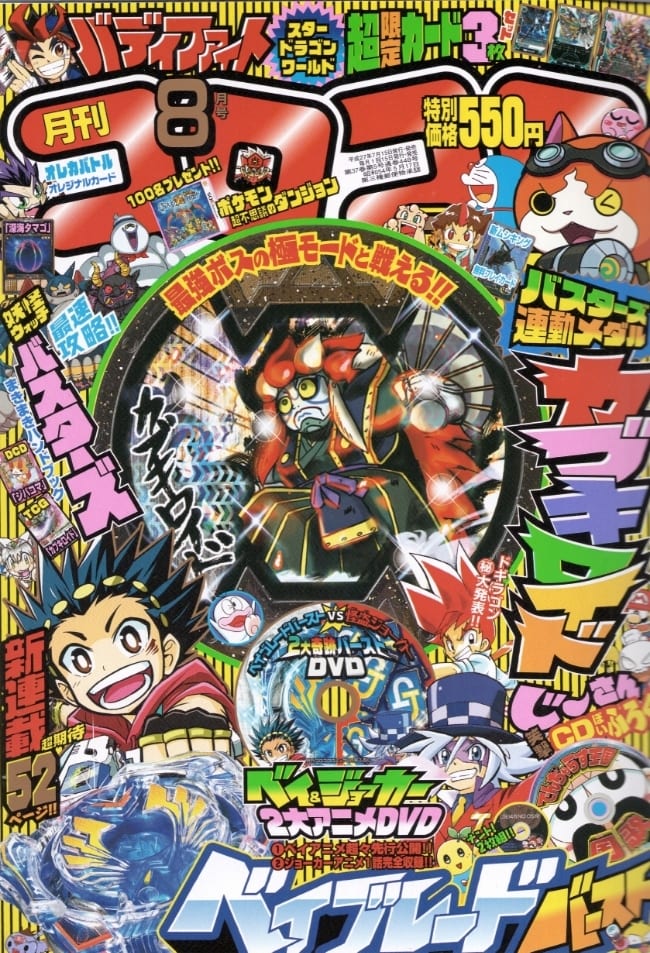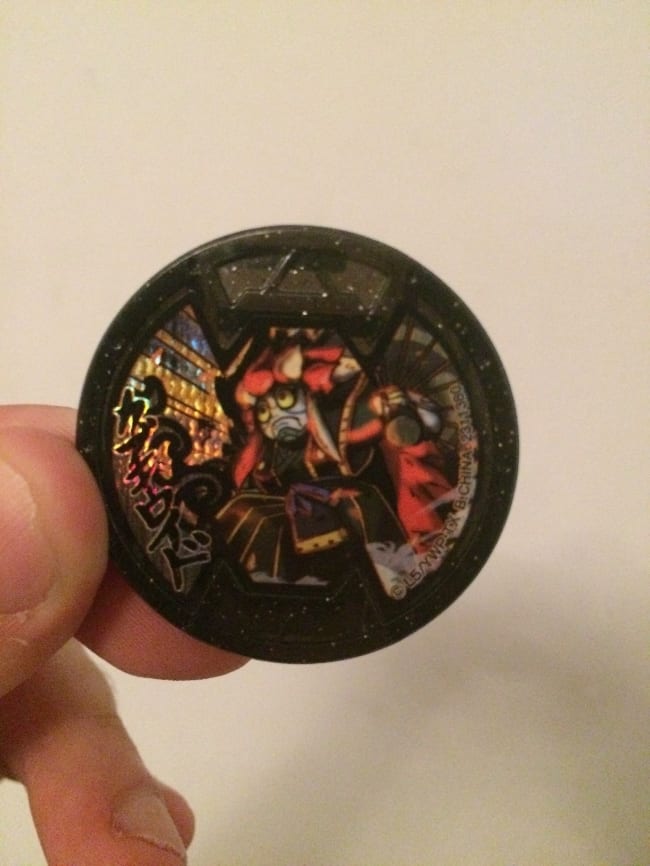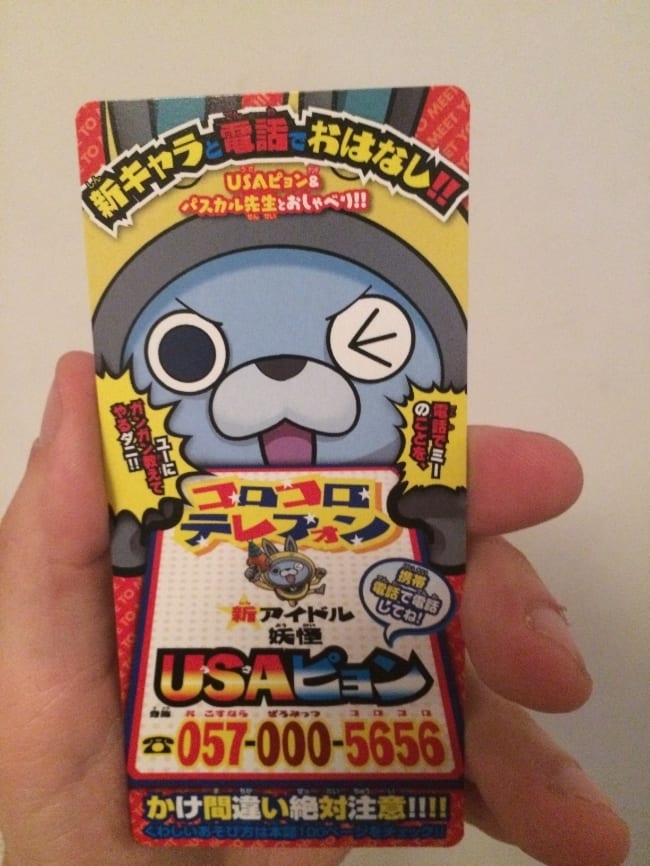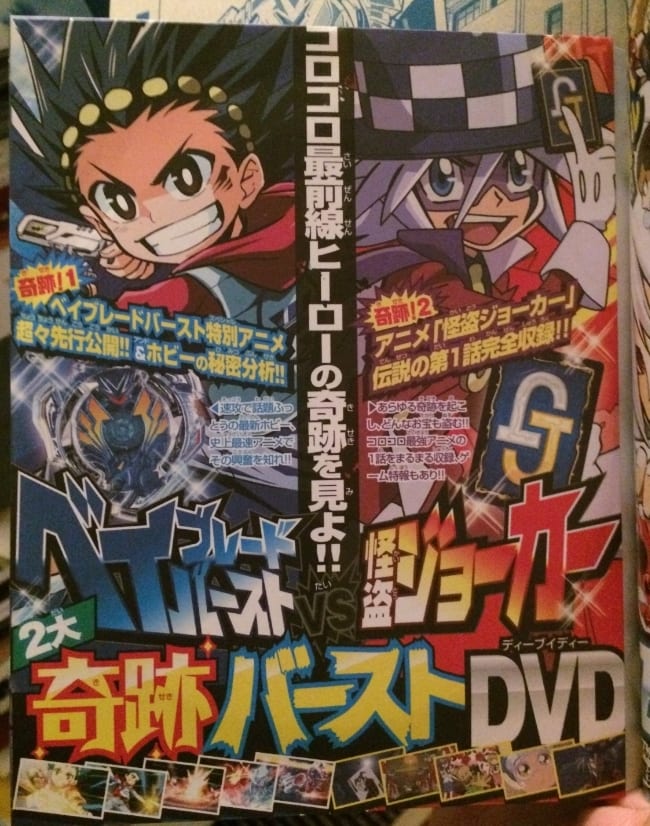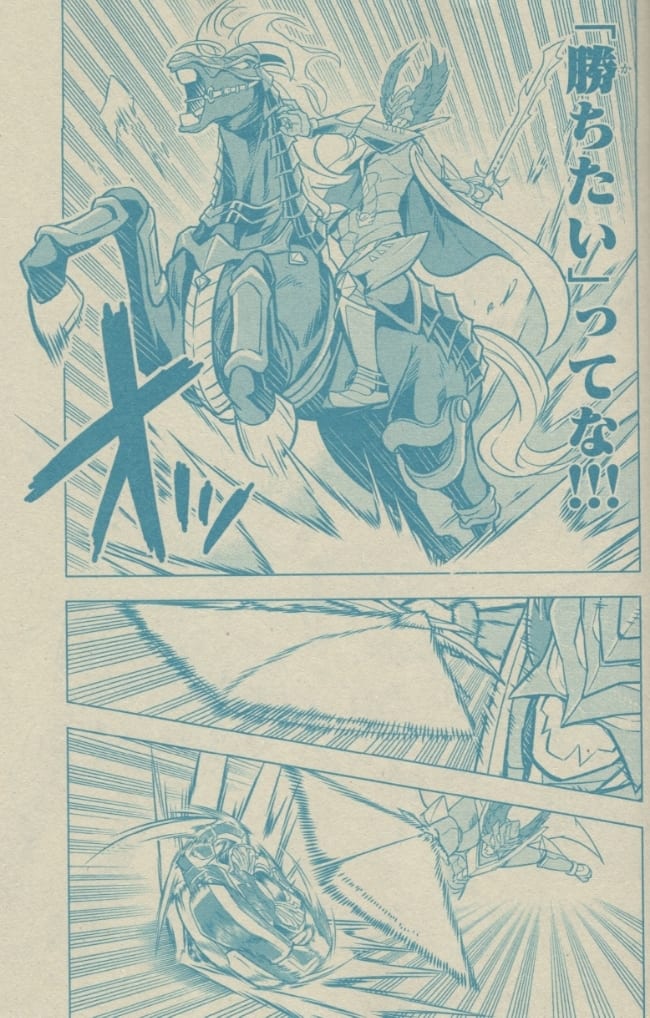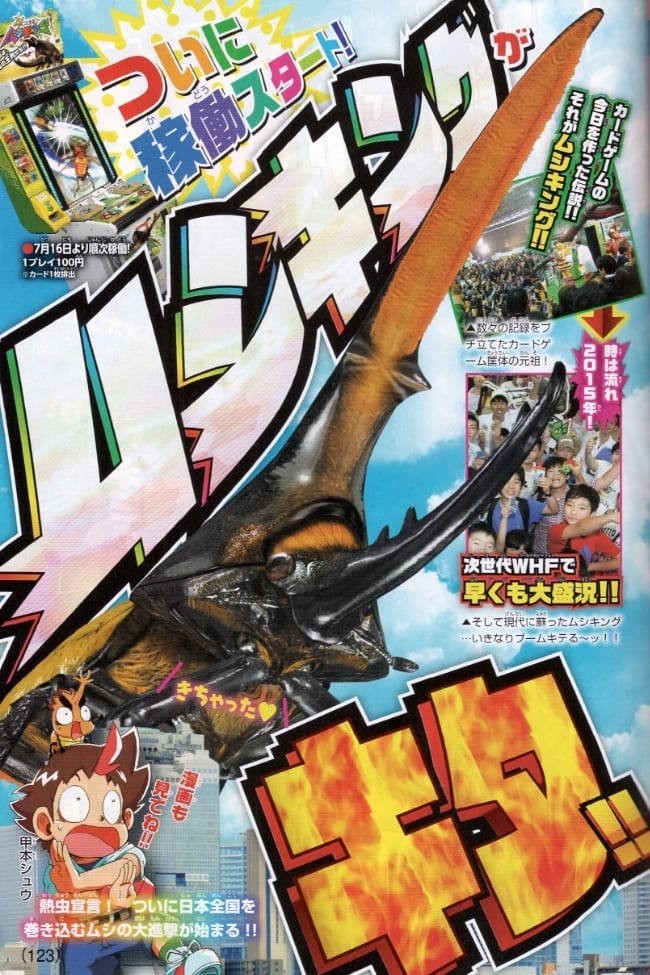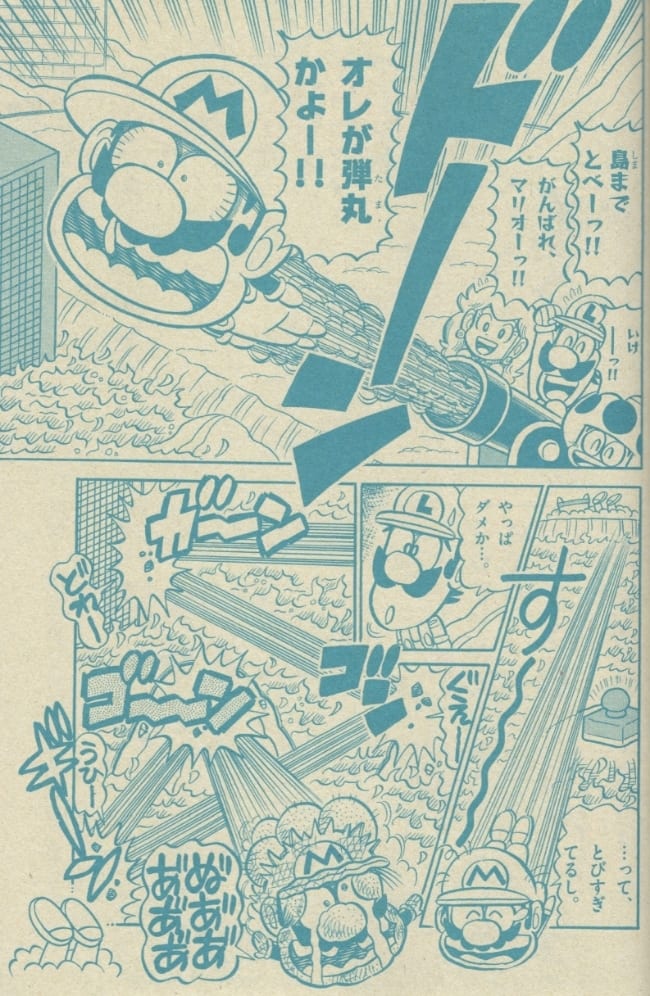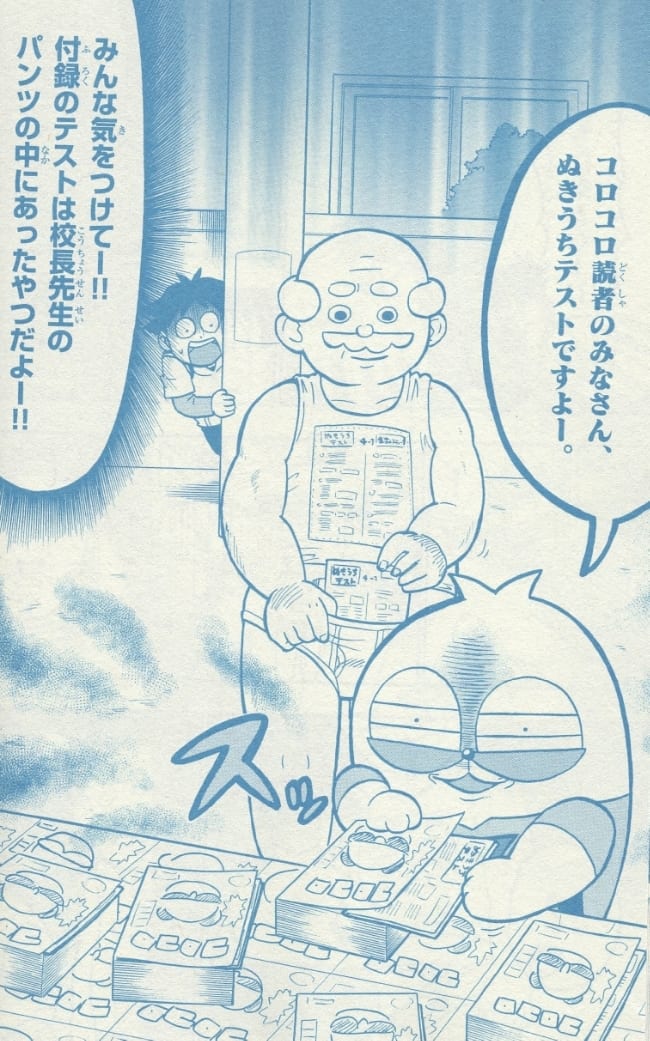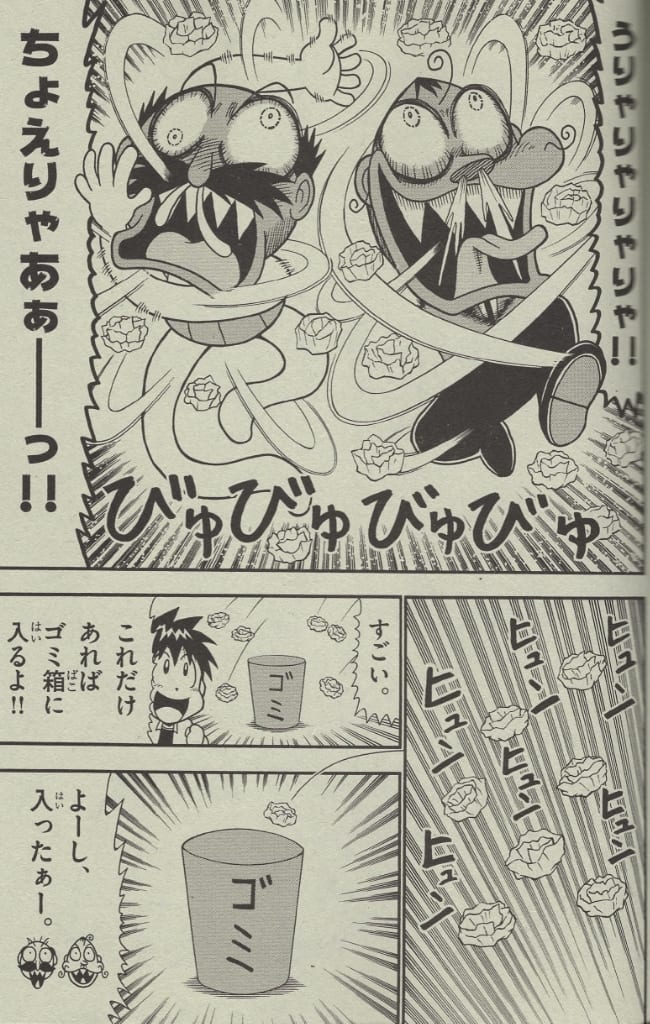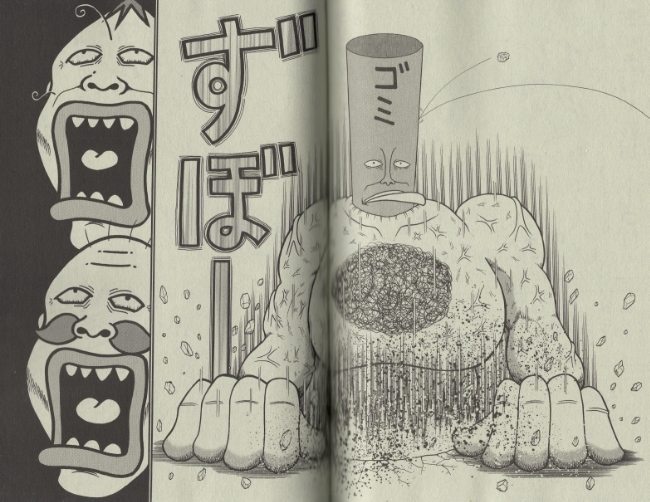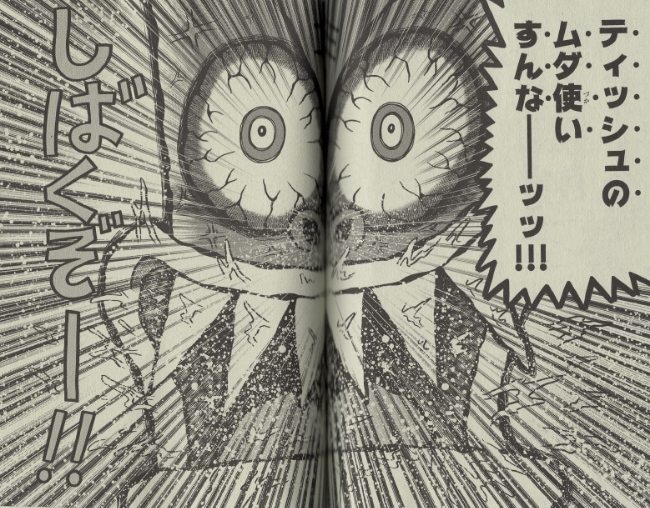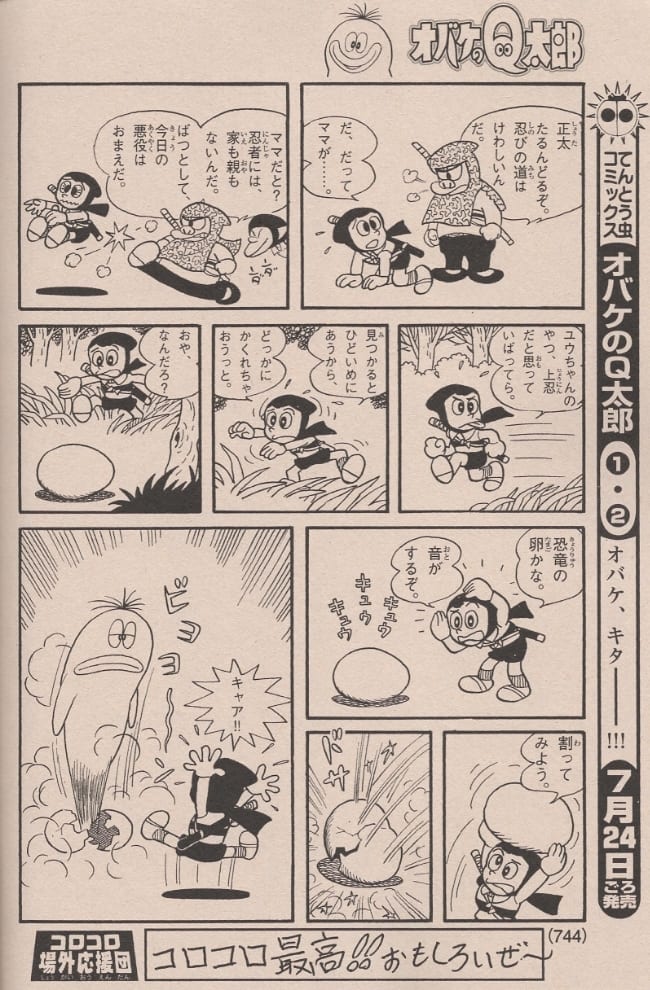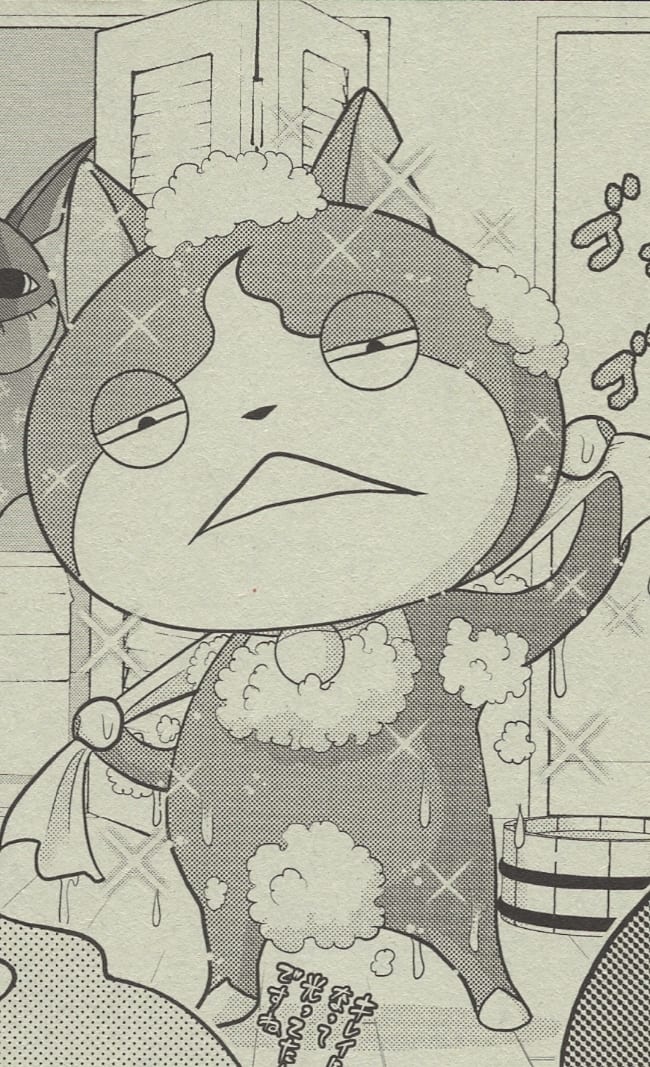It was with great interest last week that I read this post by Tom Ewing on a 1979 issue of Jackpot, one of several children's comics anthologies active in the UK at that time. What can I say? I'm an absolute mark for critical essays that take the form of a guided tour of some unfamiliar environment, and Ewing not only covers every feature in the magazine but its literal promotional attachment: a very exciting squirt ring, "mounted with sellotape, which still sticks to my Ebayed copy, covering a gash in the paper like a badly sutured wound."
The common wisdom is that these days are mostly gone. Kids do still read comics, of course, but there are so many other entertainment options that the idea of sticking a cheap toy on the cover and expecting something approaching mass youth engagement seems unrealistic. Comics, as a freestanding thing, is too marginal for that.
But then, could it be a product of our own nostalgia to remain steadfast in our ideas of the purity of comics?
Behold, the most recent issue of CoroCoro Comic, founded in 1977 and still among the most valued and veteran of children's comics venues in the manga world. "Coro Coro," as you can see, is Japanese for "austerity" - ha ha, no, actually, it's onomatopoeia for the sound of rolling, like an enormous snowball we might imagine growing in size as it thunders down the mountain toward YOUR HOME. Calculating the last year's worth of periods for which the Japan Magazine Publishers Association has posted records (i.e. through March of 2015), CoroCoro presently enjoys an average circulation of just under one million copies, which puts it among the most reliable performers for its publisher, manga giant Shogakukan. It is a monthly magazine, A5 size, and typically over 700 pages in length. The above issue bears a cover price of ¥550, which at our current advantageous exchange rate come out to $4.42.
"G-- gosh," you say, in the voice in Jimmy Corrigan, "I've bought 20-page comic books for more money than that!" Very true, and unlike even many manga magazines, a solid 100 or so pages of CoroCoro is in glossy full color, so you can't just say they use cheap paper. But then, very few of the really nice pages are actually dedicated to *comics* in CoroCoro - like a tony fashion magazine that kicks off with dozens of pages of advertisements for top brands before you even hit the table of contents, the experience of actually flipping through CoroCoro is front-loaded with an absolute bombardment of promotion for anything its editors and corporate partners can imagine might attract a male child between the ages of 8 and 12. This isn't like Shōnen Jump, where the best of the serials might branch off into a hit among the general population; this is a magazine specifically for children, and, as Kōji Aihara & Kentaro Takekuma mused years ago in their industry satire Even a Monkey Can Draw Manga, that restricts the audience to exactly two groups: kids and parents, the former of which must be entertained while maintaining the tolerance of the latter.
And what's a quick way to win the hearts of kids *and* tolerance of parents? VALUE. PROMOTIONS. LOOT.
I didn't get a squirt ring when the August issue released last week; I got a sealed bag, lashed to the magazine with thin rubber bands and overflowing with all manner of absolute shit, and it is through categorization of these myriad trinkets that I will now seek to convey the experience of navigating CoroCoro.
--
1. A BIG FUCKING PILE OF YO-KAI WATCH STUFF
For decades, CoroCoro has partnered with Nintendo to produce video game tie-in comics for mutual benefit; I wrote about one such example just a few weeks ago. Yo-Kai Watch, however, while ostensibly originating as a handheld game cart first released two years ago, was always designed to be an absolute killer of a franchise, and by god it succeeded. A spin on the monster-collecting role-playing genre exemplified by Pokémon, this new franchise plumbs the whimsical world of spirits for its content for bottomless variations on marketable characters: the most recent spin-off game, Yo-Kai Watch Busters, was released earlier this month in two variant forms, and together they have already sold over 693,000 copies. There is also an ongoing television cartoon series now up to episode 78, an animated film that grossed over $50 million, innumerable toys, no less than three manga chapters running in this issue of CoroCoro... oh, but I forget where I am! Let me instead show you the ULTIMATE measure of success:
That's right: a genuine snack food tie-in comic, just like Hostess fruit pies.
This is a Yo-Kai medal, which in the game gives you the ability to summon the pictured spirit to aid you in battle. In the real world, you often blind-buy them in packs like trading cards, and then you can plug them into your official facsimile Yo-Kai Watch or your handy Yo-Kai Pad to hear or see things happen via a code sticker that is read on the back; I think there might be an in-game use too? Or, I don't know, you can put them in an album and lord it over your friends - the object is accumulation, and I am now one step closer to knowing order in my life.
Here we have some actual cards. On the left is a premium for the Yo-kai Watch Toritsuki Card Battle game -- of course there's a card battle game -- which sold a reported 100 million cards in its first eight months of release. Note that it depicts the same character from the medal, for maximum brand synergy. On the right is a card you plug into an arcade machine, I think to battle another player for the prize of more cards. Then you rush to the back of the line to do it all over again, while your parents reflect on the freedoms they used to enjoy.
This is a phone card, which I believe lets you hear a message from the pictured character, "USA-pyon" from the forthcoming Yo-Kai Watch 3, which is set in the United States and somehow involves the Johnson Space Center. Since I guess he's a Texan, I was going to ask USA-pyon his opinion on Jade Helm, but Skype would not let me connect to this number and I don't otherwise have an international calling plan. The obverse of the card lets you talk to a different CoroCoro character, more about whom will be mentioned shortly.
But Yo-Kai Watch 3 is in the future! The game(s) that actually came out just this month is (are), again, Yo-Kai Watch Busters ("Red Cat Team" and "White Dog Corps"), and as such I also received a glossy full-color hint item titled "Kyo-aku Big Boss Maki Maki Handbook Part 2". It's 20 pages long, unfolding like an extravagant takeout menu:
As you may have noticed, each of these items relates to a discreet prong of the Yo-Kai Watch media phenomenon - a specific game or collectable, without repetition, except where meaningful for branding purposes. When French comics publisher Guy Delcourt spoke to Tom Spurgeon about manga as "very marketed," this is what he was talking about: comics as accessory to a coordinated media push. Interestingly, the first of Yo-Kai Watch to see translation for North America may be one of the CoroCoro series, which VIZ has picked up for release starting in November. A dubbed version of the anime on Disney XD, toys via Hasbro, and, of course, the original games, will follow for a similar holiday 2015 push.
--
2. A 45-MINUTE DVD WHERE THE PUBLISHER'S LOGO LOOKS REALLY COOL, SEE?
Wow, it's the future! Or, I guess including a dvd with a magazine counts as a throwback in 2015, but try and imagine you're a little kid. I know I'd have a lot of fun pulling a shiny item out of its sleeve and popping it into the player - whoa, my computer just told me it had to undo a region lock! It's like I'm back in college.
This is the tipped-in sleeve; I'm not going to spend much time on the right side of the double-feature, since CoroCoro apparently didn't. Hideyasu Takahashi's Mysterious Joker has been running since 2007, an odd (if popular) example of remix culture, its phantom thief premise liberally inspired by Magic Kaito, a series by Detective Conan creator Gosho Aoyama, with a sidekick character dressed like Fujiko Fujio A's Ninja Hattori-kun, and so on. A Nintendo 3DS game was just released last month, so we get a 4:10 advertisement for that, along with the entirety of the 2014 debut episode of the Mysterious Joker anime series, shorn of its opening and closing credits.
But then!
Beyblade, representing the left side of the bill, has been very good to CoroCoro. Unlike the various video games and cards promoted elsewhere in the magazine, Beyblades are actual toys: fancy, collectable tops which you spin via ripcord gun into little arenas to challenge friends and competitors. This has been going on since 1999, with CoroCoro hyping up the line via tie-in comics from the beginning. And since a whole new type of Beyblades was just released last weekend -- Beyblade Burst, tops which smash apart from battle damage -- the nearest arriving issue of CoroCoro would simply have to celebrate in the highest possible style: an 18:46 infomercial, centered around the activities of the World Beyblade Battling Assiciation (seen above), which hold an ultimate in-house tournament between informational segments on the all the latest gear.
(The blue barracuda wins. Spoiler warning.)
There's also a 1:37 preview of 2016's Beyblade Burst anime series, which is notable for the terrific lengths to which it goes to make a game of tops seem like a matter of life and death. It's a lot like that old commercial for Crossfire, where the players are warped into a hell dimension of frenzied combat and the loser is condemned forever, but with the quintessentially Japanese tendency to anthropomorphize the weapons into creatures, not unlike the monsters you'd collect in games elsewhere in the magazine. To illustrate:
That's from the 'big' comic this issue... the debut of the official Beyblade Burst manga from artist Hiro Morita, and by god it dramatizes its scene in much the same way as the anime sample on the free dvd, because everything is synched to an almost impossible degree.
Incidentally, there's other toys promoted in CoroCoro Comics, like the kendama, a ball-on-a-string apparatus with which you can perform lots of tricks. It's definitely for cool dudes.
--
3. OTHER CARD GAMES, OF VARYING TYPES

Hey, I've actually played Puzzle and Dragons! It's a handheld video game where you sort gems in a box to get three of the same color in a row, hopefully multiple times, and then those mighty accomplishments translate to damage you inflict on enemies, some of which you then collect for use in future battles. Naturally, it is also a card battle game; I have tilted this premium card to show off the lovely prism effect, like on a Boris Vallejo painting of Sabretooth.
This Tron-like biological horror hails from Monster Retsuden Oreca Battle, which is another arcade game (active since 2012) where you insert cards into the machine to do monster battles, I believe with a heavy degree of customization that the machine then spits back at you in the form of a new card which you can then use to battle again. I am totally going to swipe this into my local Big Buck Hunter machine to see if I can push deer forward.
This is another arcade game: Mushiking: King of the Beetles, which has been around since 2003. The card comes with a gigantic two-sided poster/map, which appears to relate to Mushiking competitions held in Japan. I'm quite fond of this - the franchise seems to be a typical accumulation frenzy, but it swaps out fantasy monsters for bugs, which when sufficiently magnified are basically monsters anyway, only real. All the advertising, even inside the magazine, is centered around gigantic, lurid close-ups of GROSS BUGS.
The little cartoon dude, incidentally, is the star of the new Mushiking serial running in CoroCoro. Ha ha, right - did I forget to mention that, save for Puzzle and Dragons, all of these card games have tie-in comics running in this very issue? I like what artist Junnosuke Ishii is doing with the bugs, making them a bit more friendly but also preserving their basically alien, inhuman state:
Most of the tie-in comics also appear to be serials, which is to say that an enormous portion of CoroCoro Comic is surrendered to media license manga. But then, isn't that quite a lot of the popular kids' comics today as well? Think of all those BOOM! license comics, the ones from Adventure Time, etc., and picture them all crammed into one fat magazine: that's not very far from the model CoroCoro has adopted, but Shogakukan takes things even further - EVERYTHING in CoroCoro, while ostensibly 'entertainment,' is somehow also advertising for something else, whether it be a tie-in toy or a video game or an anime, or even just a collected book. Moreover, all of these items are also advertised, explicitly, in CoroCoro's multitudinous color 'news' pages, creating a circle of feedback that may lead you, young fellow, to think you are participating in some sort of scene -- there is also a CoroCoro store, and a CoroCoro tour -- but the objective, in the end, is always to direct you and your parents' attentions out of the magazine and toward a valued brand partner.
I use the gendered term "fellow" deliberately. In all the pictures of swarming, happy kids all over CoroCoro Comic, you never seem to find any girls. That's because your sister's energies would be better spent engaging with the franchise opportunities over in Ciao; I'm told they have their own Yo-Kai Watch serial.

Finally, we have not one, not two, but three cards from the delightfully-titled Future Card Buddyfight, an original card battle game which only just launched last year. The inevitable anime tie-in just started a new season recently, while artist Mitsuhisa Tamura's manga version continues to run in CoroCoro; in addition to the usual chapter this month, there's also a 32-page tip-in mini-magazine, with yet more ads/news and yet more comics:
Classy, but also important. If I were to try and identify the general tone of the comics in CoroCoro, it would be 'studied irreverence'. In his 1996 book Dreamland Japan: Writings on Modern Manga, Frederik L. Schodt spoke with Kazuhiko Kurokawa, then-EiC of CoroCoro, who observed that young elementary school boys tend to have difficulty focusing on long, dramatic serials, which has led CoroCoro to emphasize a very raucous sense of humor in its comics, one which I think projects a certain especial irreverence, even toward such institutions as dear Super Mario:
This is from Yukio Sawada's Super Mario-kun, which has been present in CoroCoro Comic for nearly one quarter of a century, having run from Super Mario World for the SNES to Super Mario 3D World on the Wii U. That it remains quite up to date is telling: it must be a friend to each generation of kids, and in appearing to function on their loud, silly playtime level, it eases down the pill of engagement with all these other wonderful things to buy in the CoroCoro kingdom.
--
4. A... QUIZ?
That's right, a fucking quiz. Try for 100 points, unless you're stupid.
Actually, this ushers us in to the small world of original CoroCoro comics, which is to say manga that doubtlessly has been merchandised beyond comprehension, but did not necessarily begin as a wing of some cross-platform advertising campaign. Among these is Yuuji Nagai's 100% Pasukaru Sensei (the middle term probably better localized as "Pascal", though "Pasukaru" is the official English title in the magazine), which appears from this issue's installment to be a comedy about a zany animal schoolteacher who drives his human students up the wall. (He's the guy on the other side of the phone card with USA-pyon, so we're definitely seeing a push.) Specifically, the episode revolves around the teacher springing quizzes on his students, no matter where they are: quizzes written on a field; quizzes thrown from a parade; skywritten quizzes; and quizzes tucked away into issues of CoroCoro Comic.
So yeah, it's a meta-joke, one which you can't help but raise to your nose for a sniff. Bodily functions, underpants and private parts are the engine for quite a bit of CoroCoro comedy, no doubt erecting a cultural barricade in front of the series' translation prospects, but delighting the curious adult onlooker. There are so many examples!
This is from Noriyuki Murase's Keshikasu-kun, the saga of a living eraser (as in, the piece of stationary) who gets up to mischief. The little black flecks emanating from the anus really tie it all together.
Here's Yasunari Nagatoshi's Zo Zo Zo Zombie-kun, which this month revolves entirely around the many ways Zombie-kun's body falls apart while trying to perform school activities. Surprise is the heart of humor, after all, and who expects profuse cranial bleeding in class?
God... the artist of this thing calls himself "Maeda-kun" (hopefully it's the Legend of the Overfiend guy); 'kun' being usually the sort of honorific you apply to the title character to identify it as a little boy, and thus the reader's pal. The title of this is Hyahha dayo ♪ Funasshi, and it's a four-panel gag strip about the actual (if unofficial) mascot of Funabashi, Chiba, which was created anonymously on social media and later merchandised. It's absolutely terrifying, and the comic, which erupts out of its four-panel strictures for big concluding gags, here relates the consequences of the Funassyi family visiting a spa. Love those thick, scribbled eyes!
--
5. OTHER GAMES AND NOVELTIES
Thus, we see the conflict of CoroCoro Comic. Some of its series are actually pretty funny, with lively and often weird drawing. I've mentioned before that working in a niche like kids' comics, where big, culture-wide hits like One Piece or Naruto are unlikely, can provide a license to experiment and play; this I feel is observable in some of these comics, created by artists unlikely to do work in older-aiming magazines, and beholden to influences native to their terrain.
Yet CoroCoro is also manga of the present, and maybe even manga of the future. We hear over and over that Japanese comics-reading, at least on the serial magazine level, is firmly in decline. CoroCoro still sells unusually well, and part of that is because it's become extra-comics: it has surrounded itself with all of its competition for young readers' attention, and framed the situation like everybody is part of one big family. It posits comics as a core of this multi-media experience, which makes conceptual sense - where do all these superhero movies come from? Thin air? They may be decorated modifications of existing action movie formulae, but the branding does come from comics. This is often cause for angst from English readers, but CoroCoro takes a different approach - it celebrates the base positioning of comics as a ground on which it can plant its feet, and in that way maintain balance through rough winds.
So, you get a lot of things like this: a scratch-off game promoting the sixth Pokémon Mystery Dungeon video game, coming this September to a Nintendo 3DS near you, please consult the jokey Pokémon comic elsewhere in this issue, thanks.
And then you get this, a set of free CDs -- Comic Discs, ha -- depicting the many butts available in the comics of artist Kazutoshi Soyama, represented here by the shocking denouement of a used tissue-throwing competition:
A whole open magazine that's just a scream. Something fitting about that.
***
PLEASE NOTE: What follows is not a series of capsule reviews but an annotated selection of items listed by Diamond Comic Distributors for release to comic book retailers in North America on the particular Wednesday identified in the column title above. Be aware that some of these comics may be published by Fantagraphics Books, the entity which also administers the posting of this column. Not every listed item will necessarily arrive at every comic book retailer, in that some items may be delayed and ordered quantities will vary. I have in all likelihood not read any of the comics listed below, in that they are not yet released as of the writing of this column, nor will I necessarily read or purchase every item identified; THIS WEEK IN COMICS! reflects only what I find to be potentially interesting.
***
SPOTLIGHT PICKS!
Fante Bukowski: Hi there! This section of the column is going up about 15 hours after the CoroCoro stuff, because I spent tooooo much time playing with toys. Perhaps scenes from the unyielding battery of success that is my life will populate this 80-page softcover from prolific and admired Noah Van Sciver - it's a full-color story catching bleakly funny snatches from the hapless existence of a boozy writer of dubious prospects. Portions have appeared online, but don't you want a comprehensive edition on which you can spill something? Preview; $12.99.
Tim Ginger: And here is a 152-page original from British cartoonist and animator Julian Hanshaw, who's previously released The Art of Pho (2010) and I'm Never Coming Back (2012) with Jonathan Cape. A retiree's life is disrupted when "a conspiracy theorist starts asking uncomfortable questions, and the haunting reappearance of an old friend provokes some hard choices about when to let go and when to hold on," per publisher Top Shelf, releasing via IDW. Some stark hatching from the looks of this one. Preview; $19.99.
--
PLUS!
Prison School Vol. 1: Life got you down? Tired of long-winded columnists telling you about kids' manga? Want something lurid, but just not excited about the penultimate Gantz this week? I understand - columnists are scum, and often late. Luckily for civilization, Yen Press has a potential cure in the form of this spicy seinen serial from Akira Hiramoto, creator of Me and the Devil Blues. A small group of boys should be thrilled to be the first attendees of a famed girls' academy, but they did not count on the school's authoritarian streak, leading to purportedly funny and outrageous scenarios; an anime adaptation is presently running. Going off this package's 400-page length, I'll presume the publisher is doubling up on the Japanese releases, presently at vol. 17; $20.00.
Sunny Vol. 5: Meanwhile, VIZ has the hardcover latest in Taiyō Matsumoto's slice-of-life series about young kids dealing with life away from their parents. This volume brings the English editions up to date with the Japanese collected releases, although it appears the series is up and running again in the monthly iteration of Shogakukan's Big Comic Spirits, following the demise of IKKI, its original serializing forum; $22.99.
The Baby-Sitters Club Color Edition Vol. 1: Kristy's Great Idea: Oh yeah, there is no way Scholastic was gonna leave this money on the table. Before Drama, before Smile... before even X-Men: Misfits, Raina Telgemeier adapted a quartet of Ann M. Martin youth novels to bookshelf comics form. Now, 2006's debutante exhibit sees re-release in the all-color format that proved so lucrative for Jeff Smith's Bone, via subsequent Telgemeier collaborator Braden Lamb. Actually, this has been out in bookstores for a few months, only arriving via Diamond as the second book in the series (The Truth About Stacey) drops in the big box outlets - the publisher is clearly aiming to have all four of these on the market well before Telgemeier's next original work, Ghosts, arrives in the autumn of 2016; $10.99.
Awkward: But Telgemeier is hardly alone among bookstore successes with prominent work done on (what used to be called) the OEL manga scene - Svetlana Chmakova was among the most popular English-original artists published by Tokyopop a decade ago, and she has continued to work extensively with Yen Press on both original projects (the four-volume fantasy series Nightschool) as well as adaptations (three volumes of James Patterson's Witch and Wizard). This one's also from Yen, a 240-page original school comedy about peer relationships and trying to fit in. Preview; $11.00 ($24.00 in hardcover).
Wolf #1: Your Image debut for the week, this time weighing in at 56 pages of story. It's a Los Angeles-set paranormal detective series from many of the talents behind the now-concluded secret ops series Zero, including writer Ales Kot, artist Matt Taylor (now set to draw the series entire), letterer Clayton Cowles and designer Tom Muller, with the addition of colorist Lee Loughridge. Preview/interview; $4.99.
It Will All Hurt #2: Another Study Group comic released to Diamond-serviced stores via Alternative Comics, continuing Farel Dalrymple's vivid fantasy adventure with another 48-page installment. Also viewable as a webcomic; $8.00.
Judge Dredd: Dark Justice (&) Zenith Phase 4: Two from 2000 AD and Simon & Schuster, representing new and old affairs. Dark Justice is a storyline that just wrapped earlier this year, seeing Judges Dredd & Anderson confronting the supernatural Dark Judges in outer space - a straight-shot suspense piece full of popular characters, written by John Wagner and painted by Greg Staples, and compiled into a 112-page hardcover, supposedly with copious production materials included. Zenith closes out the Grant Morrison/Steve Yeowell superhero series with a huge caped clash from 1992, although I presume a 2000 one-off revival will also be included. It's also a 112-page hardcover; $24.99 (Dredd), $25.00 (Zenith).
Legends of the Dark Knight: Norm Breyfogle: Unexpectedly, this is John Wagner release #2 for July 22, insofar as he co-wrote several of these late '80s bat-books, though the lion's share of the scripting was done by fellow 2000 AD veteran Alan Grant, with additional scripts by Mike W. Barr, Jo Duffy, Max Allan Collins and Robert Greenberger. The unifying presence, of course, is penciller Breyfogle, whom I know some of you Bat-fans like. Collecting Detective Comics #579, #582-594 and #601-607, and applicable portions of Batman Annual #11-12 into a 520-page hardcover; $49.99.
Eric Powell's The Goon: Chinatown and the Mystery of Mr. Wicker - Artist's Edition (&) Wally Wood's EC Comics - Artisan Edition: Finally, two of IDW's huge, super-deluxe collections in variants on their famous 'scanned in color from the b&w original art' approach. The Goon is a newer comic, with the title work (an original graphic novel, which I think is a first for this line) dating to 2007. It's 144 pages at 12" x 17", with the original color washes and sepia tones intact. Wally Wood, you'll notice, is an "Artisan Edition," which looks to be an endearing attempt at doing a bargain edition for a super-deluxe book, in that it's now a softcover and the dimensions have been reduced to 8" x 12". Still, it's 152 pages of prime Wood with probably still very lush reproduction quality; $100+ (Goon), $49.99 (Wood).
--
And so, our energies spent, we collapse at the end of the day. I wonder how often it takes the average kid to get through an issue of CoroCoro Comic? The damn thing is so saturated with information you'd presume it's meant to last the whole month, but maybe children try to match its energy and ride it all the way as fast as possible. A few comments were left in the space between the first half of this column going up and the second half's arrival, with "Chris V." mentioning that he once saw Doraemon run toward the back of the magazine; the work of Fujiko Fujio -- which is to say the team of Motoo Abiko ("Fujiko Fujio A") and the late Hiroshi Fujimoto ("Fujiko F. Fujio") -- Doraemon was basically the whole reason CoroCoro was founded, since providing the time-travelling robot cat megahit with a dedicated home could only prove useful and profitable. Its comparatively gentle approach, then, perhaps acted as a "chill out room" (in Chris' words) for overstimulated readers who'd gulped down their whole snack at once.
Oddly, the back pages of the August 2015 CoroCoro Comic are also occupied by a Fujiko Fujio production.
This appears to be an early episode -- possibly even the 1964 debut -- of Obake no Q-tarō, a pre-Doraemon series about a funny spirit and the people it haunts. It was adapted into one of the early television anime series, with its initial broadcast occurring in 1965, so it is not totally unlike the rest of the work in CoroCoro today, though it is very sedate and dialogue-heavy; characters running with both feet off the ground is sufficient notice of frantic activity.
Of course, the magazine has an angle - a new line of collected editions for this classic is due to begin in stores later this week. But this raises an interesting question: why would 8-year olds care? Surely they can't be banking on this mild obake riding the wave of Yo-Kai Watch... so is this a bone thrown to nostalgic parents? A special, hidden comic just for them, as a reward for sitting through all that lucrative noise? A veritable Yo-Kai medal, summoning relief, with the double benefit of sending the kids off to bed?
God, I'm sleepy too. Let's just leave that in our heads... as we dream of monsters... until next time...
what...
what will we see...
in...
our
dr
...
...
...
...
...
...


